A timeline of how the Kyle Rittenhouse case played out over the last year following the shootings in Kenosha
Kyle Rittenhouse has been found not guilty on all counts for fatally shooting two people and wounding a third during violent protests in Kenosha, Wisconsin, in 2020 in the aftermath of the police shooting of Jacob Blake.
He was charged with five counts, including first-degree reckless homicide for killing Joseph Rosenbaum, 36; first-degree intentional homicide for killing Anthony Huber, 26, and attempted first-degree intentional homicide for shooting and injuring Gaige Grosskreutz, 26, on the third night of the unrest in Kenosha.
Rittenhouse's lawyers say Rittenhouse, then 17 from Antioch, Illinois, acted in self defense. It was on the state to disprove the self defense claim.
The case quickly gained national attention with Rittenhouse, particularly in conservative media, being hailed as a patriot and hero by gun rights advocates.
The 12-person jury heard from witnesses over two weeks and then deliberated for nearly 26 hours before reaching their acquittal verdict.
Here's how the case unfolded over the past 15 months:
Aug. 23, 2020: A Kenosha police officer shoots Jacob Blake seven times, caught on video
Responding to a call about a domestic incident at a child's birthday part, Kenosha police officer Rusten Sheskey shoots Jacob Blake, a Black man, seven times from behind as he's getting into an SUV.
A neighbor's cellphone video of the Sunday afternoon incident quickly goes viral, prompting massive protests in Kenosha that turned violent, leading to major property damage downtown.
SPECIAL REPORT: One year after the shooting of Jacob Blake, Kenosha tries to find a way forward without forgetting the past
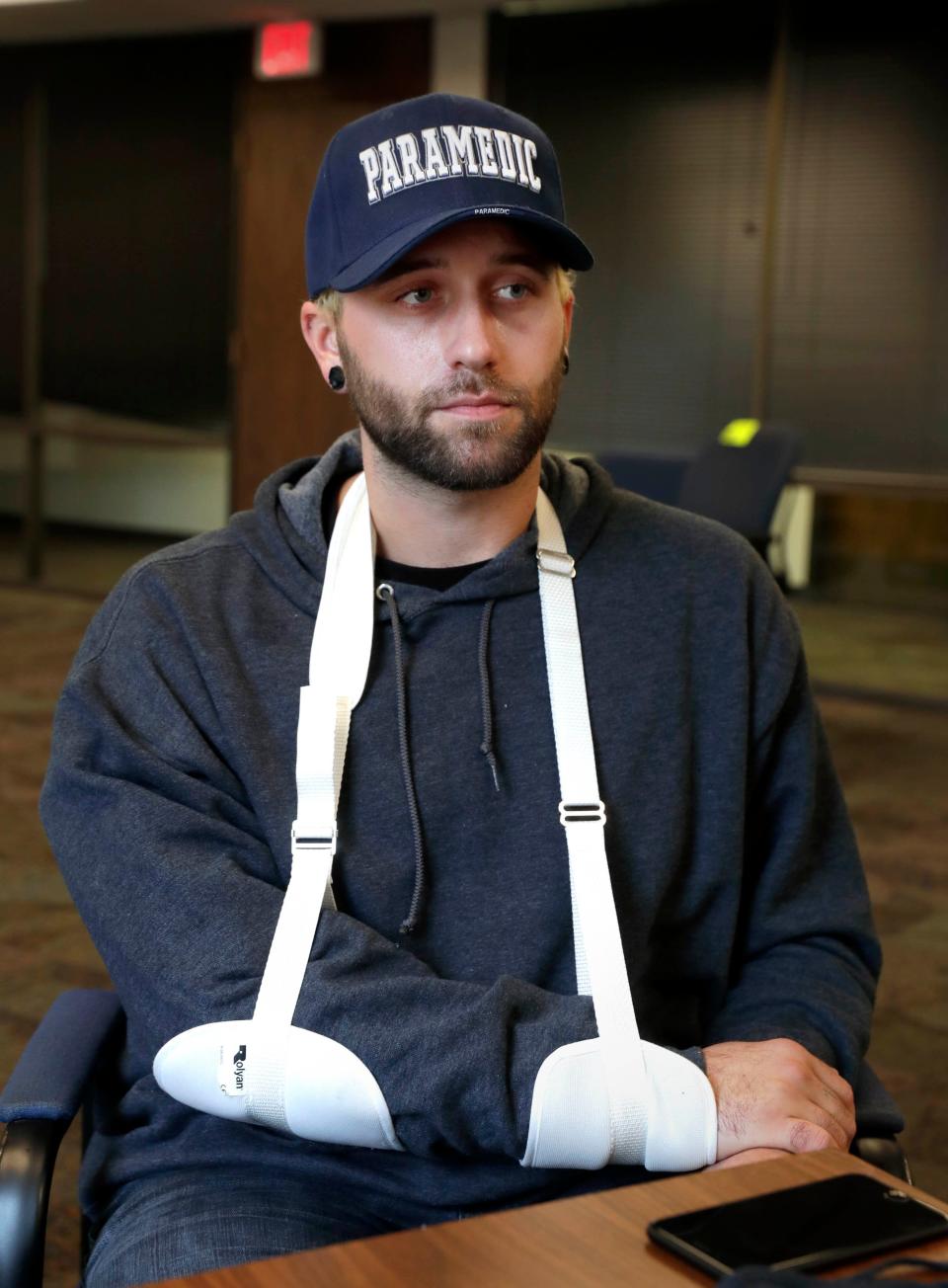
Aug. 25: 17-year-old Kyle Rittenhouse comes to Kenosha to monitor protests; shoots three people and kills two
Violent protests followed the Blake shooting, with dozens buildings destroyed and severely damaged. Though the protest was centered outside the courthouse, arson and looting spread to the Uptown area as well.
Rittenhouse, of Illinois, and his friend Dominick Black, of Kenosha, had been helping clean up around Civic Square Park on Tuesday. They return downtown that evening with rifles, joining other armed men guarding a second location of a car business that had been severely damaged Sunday night.
Later, Rittenhouse walks alone to the business' third location four blocks away, and encounters Rosenbaum, who chases him before Rittenhouse fatally shoots him.
As Rittenhouse walks away, he falls to the ground. He fires at a man who tries to kick him, then kills Anthony Huber, who had hit him a skateboard. Grosskreutz, who was approaching with a handgun, is wounded.
Rittenhouse then walks toward several police tactical vehicles at the nearby intersection, his arms raised in an apparent surrender. The police vehicles drive past him toward the shooting victims. Rittenhouse meets back up with Black, who drives him home.
Aug. 26: Rittenhouse surrenders to police in Antioch, Illinois
A few hours later, around 1:30 a.m. Rittenhouse, joined by his mother, surrenders to police in his hometown of Antioch, Illinois.
His rifle was in Black's trunk, along with Black's own rifle. Black had purchased the firearm for Rittenhouse in May at a hardware store in northern Wisconsin and kept it at Black's stepfather's house. Black turned over both weapons to police.
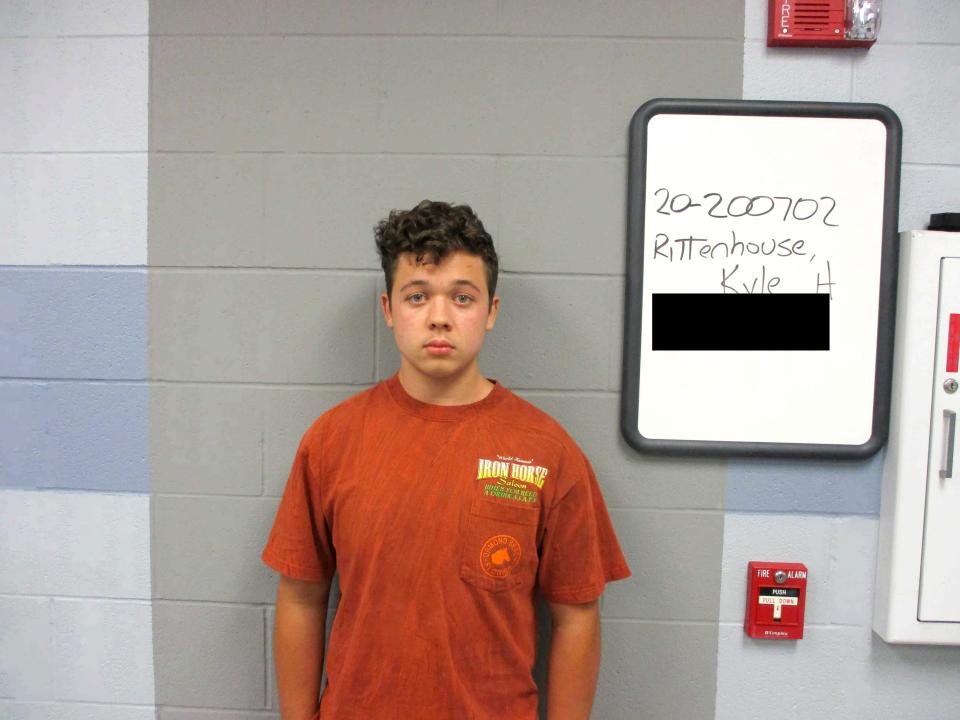
Aug. 27: Rittenhouse charged with homicides
Numerous videos of the shootings are posted on social media with hours. The Kenosha County District Attorney's office charges Rittenhouse with intentional, reckless and attempted homicide. The case is assigned to Kenosha County Circuit Judge Bruce Schroeder.
Rittenhouse remains in custody at an Illinois juvenile detention center.
Aug. 28: Legal team announces it will defend Rittenhouse, solicits donations
Conservative Atlanta defamation lawyer Lin Wood announces he is assembling a legal team and begins using social media to solicit donations for Rittenhouse's defense. Wood directs donations be sent through a Texas non-profit he and John Pierce, another conservative attorney, had set up just weeks earlier for a different purpose.
Supporters donate nearly $2 million within a month.
Pierce begins a relentless full-court press in media and online, calling the charges political and portraying his client as a patriot.
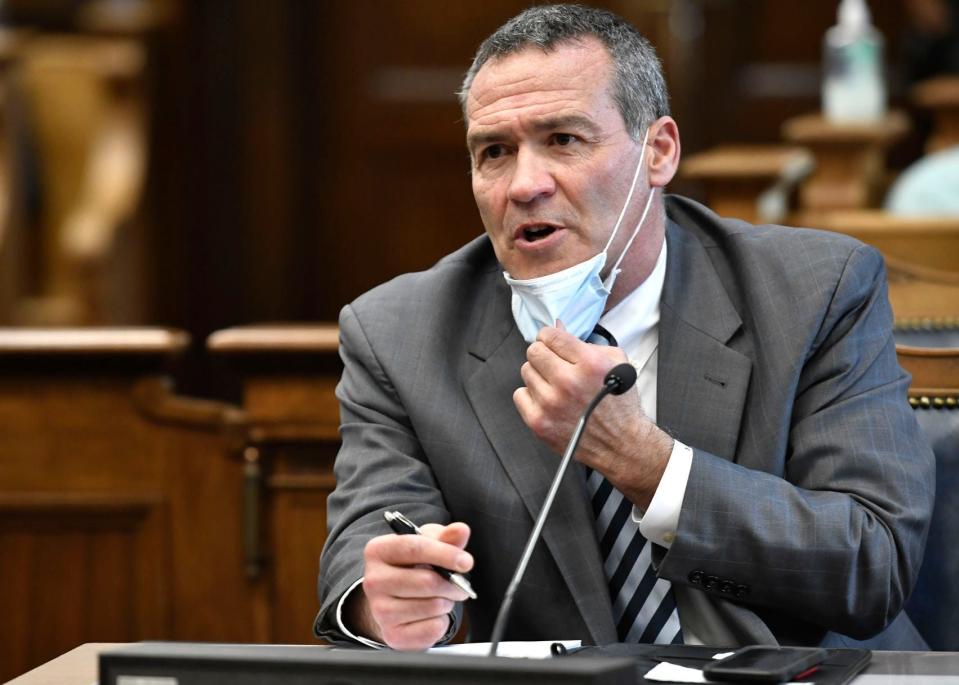
Sept. 1 and 3: Presidential candidates visit to Kenosha
President Donald Trump comes to Kenosha on Sept. 1, and hails law enforcement for quelling disturbances, but offers little solace to those seeking justice for Jacob Blake.
Two days later, then-candidate Joe Biden arrives and speaks by phone with Blake — who is paralyzed from the shooting. Biden also meets in-person with Blake's family.
Sept. 16: Racine lawyer Mark Richards joins defense team
Wood and Pierce aren't licensed to practice in Wisconsin. They retain Racine criminal defense attorney Mark Richards to represent Rittenhouse in the case. Other Wisconsin lawyers were initially hired, but they quit over Wood's role in the case. Corey Chirafisi of Madison later joins Richardson as co-counsel.
Sept. 18: Parents of Kenosha shooting victim Anthony Huber speak out
The parents of Anthony Huber, who was killed at a Kenosha protest Aug. 25, are "deeply disappointed that the President, members of the media, and others have said that Anthony deserved to die for attempting to protect others from a person who had just killed someone," according to a statement released Friday by their attorneys.
Huber was fatally shot after he tried to use his skateboard to disarm Rittenhouse moments after the teen killed Rosenbaum.
Sept 22: Rittenhouse defense releases edited, narrated video of Kenosha shootings
Rittenhouse's lawyers prepare to fight his extradition to Wisconsin, while conservative media outlets promote his story. Fox News' Tucker Carlson show airs part of an 11-minute video composed of edited clips from the night of the shooting that advances the defense narrative.
The video was created by #FightBack, a foundation created by Rittenhouse’s defense team.
Oct. 9: Protester charged with firing gun right before Rittenhouse began shooting
Prosecutors charge Joshua Ziminski, 35, of Racine, with firing a pistol at the protests on Aug. 25. Rittenhouse supporters say Ziminski talked with Rosenbaum right before he went after Rittenhouse, and that the shot Ziminski fired made Rittenhouse believe he was being targeted.
Oct. 30: Rittenhouse extradited to Wisconsin
Rittenhouse is transported from a juvenile detention center in Waukegan, Illinois to Kenosha. His lawyer tried to argue extraditing the teenager to face homicide charges in Wisconsin would be akin to "turning him over to the mob" and violate his constitutional rights, but failed to convince a judge Rittenhouse should stay in Illinois.
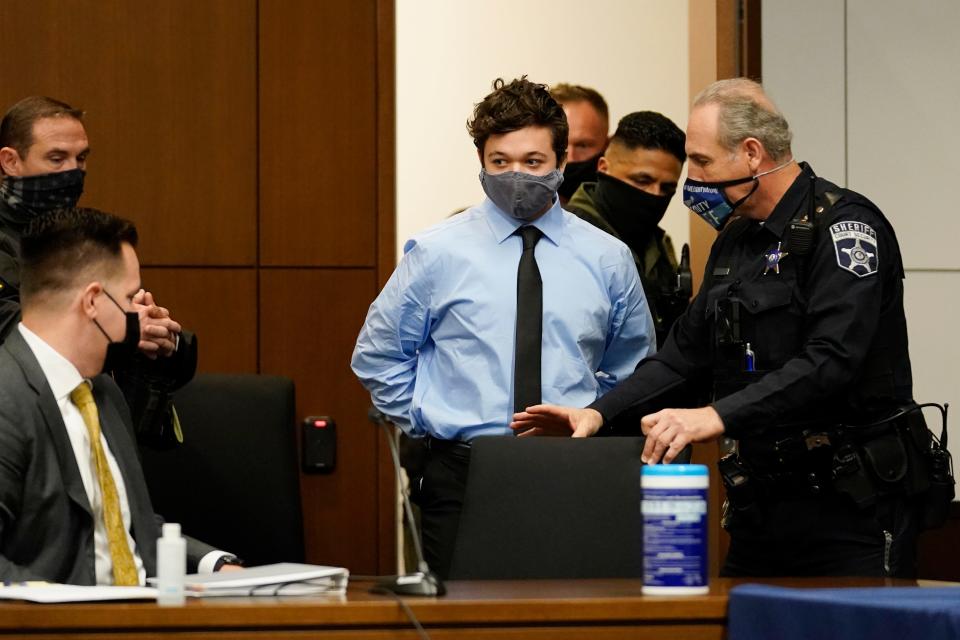
Nov. 9: Rittenhouse's friend charged with giving him the gun
Prosecutors charge Rittenhouse's friend Black with illegally providing him a weapon. Rittenhouse was too young to legally buy a gun, so Black, 19, purchased the Smith & Wesson M&P 15 rifle for him in May.
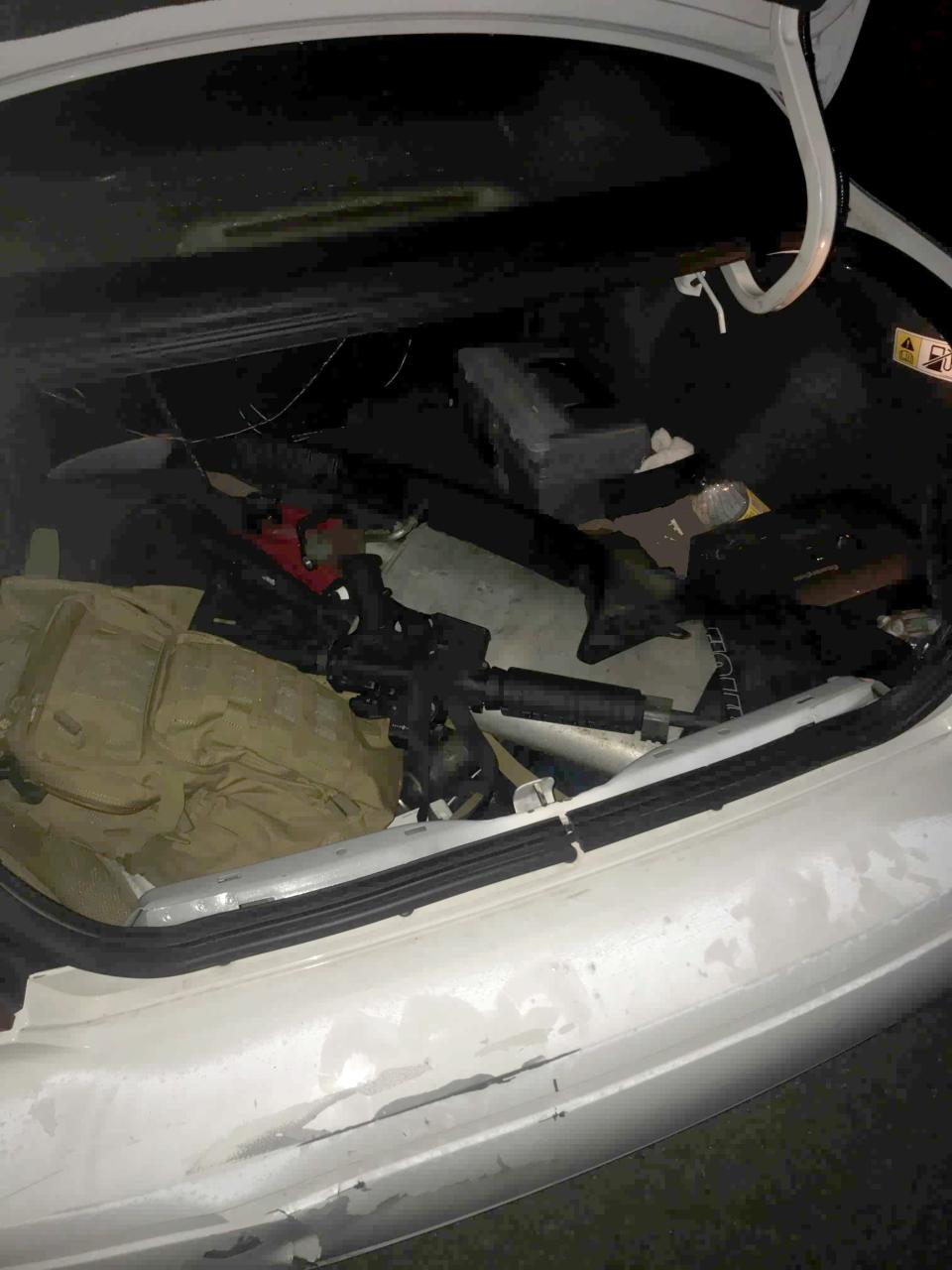
Nov. 20: Rittenhouse released on $2 million bail
Pierce posts $2 million bail for Rittenhouse and the teen leaves the Kenosha jail. He is taken initially to a "safe house" in South Bend, Indiana. There, he poses for a picture with Pierce and actor Ricky Schroder, who had contributed to the bail. "Free Kyle" branded merchandise sells within weeks to both raise money and promote his innocence.


Jan. 5, 2021: District Attorney clears officer Rusten Sheskey in Blake shooting
Kenosha County District Attorney Michael Graveley announces at a news conference he won't charge the police officer who shot Jacob Blake.
Graveley says the officer, Rusten Sheskey, could successfully argue self-defense before a jury because Blake had a knife.
Jan. 5: Rittenhouse pleads not guilty, meets Proud Boys at a bar
Rittenhouse appears for his arraignment via Zoom just two days after turning 18 and enters not guilty pleas in the shooting.
He and mother later go to Pudgy's Pub in Mount Pleasant, where Rittenhouse has several beers and poses for pictures with members of the Proud Boys, a far-right group known for violent confrontations. He wears a T-shirt that reads, "Free as (expletive)."
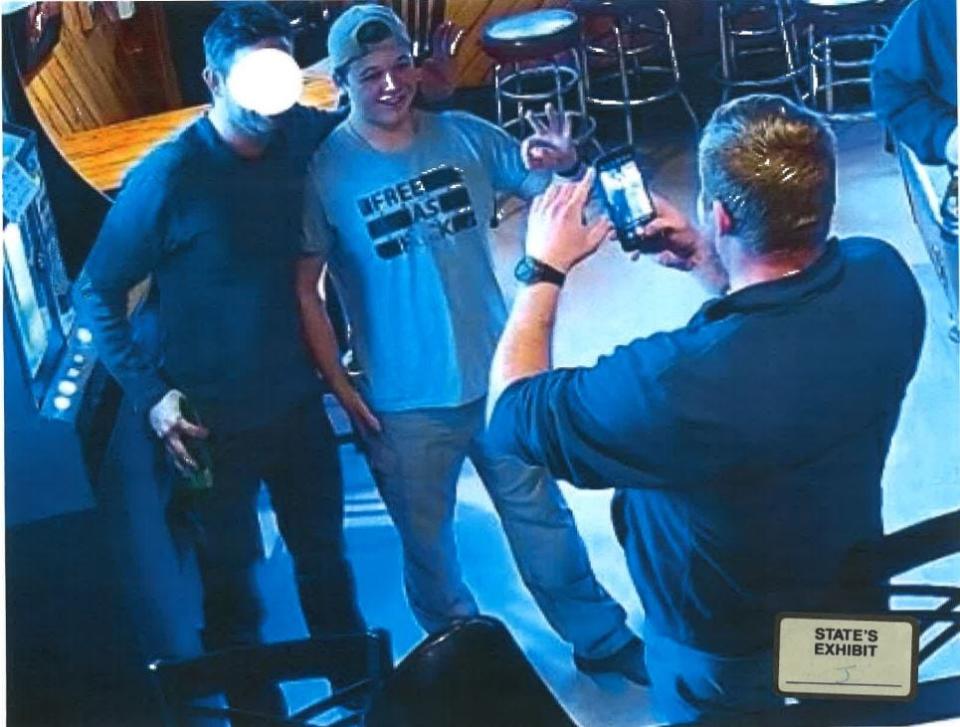
Feb. 3: Prosecutors ask judge to raise Rittenhouse's bail by $200K
Prosecutors point out to Judge Bruce Schroeder that Rittenhouse no longer lives at his family's apartment in Antioch, Illinois, and ask that his bail be raised to $2.2 million.
Schroeder declines, but demands Rittenhouse's current address be shared with the sheriff, and him, not with prosecutors.
Activists called for Schroeder's resignation over the bail decision.
Feb. 5: Rittenhouse fires attorney John Pierce
John Pierce appeared at a couple of extradition hearings in Illinois, but withdrew his request to be admitted to practice in Wisconsin for Rittenhouse's homicide case in Kenosha County, after prosecutors raised several objections.
A different Los Angeles lawyer, Robert Barnes, takes over the public relations and civil legal responsibilities related to Rittenhouse and his family.
March 10: Judge sets trial date for Nov. 1
Rittenhouse's trial is scheduled for Nov. 1.
April: Police officers, public officials reportedly donate to Rittenhouse's defense
British newspaper The Guardian reports law enforcement and other public employees contributed to Rittenhouse's legal defense fund, and to a fund supporting Sheskey.
No Kenosha area police or officials were among those who donated more than $685,000 to Rittenhouse between the end of August and Jan. 7.
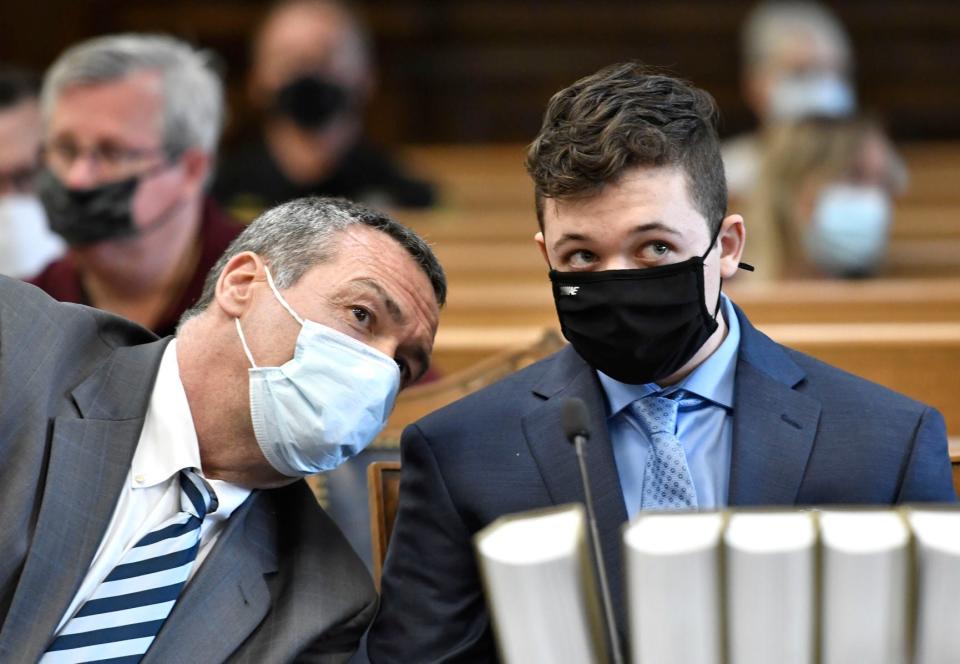
May 21: Rittenhouse makes first in-person Wisconsin court appearance
Up until May 21, all of Rittenhouse's Wisconsin court appearances had been via Zoom, from his lawyer' office in Racine.
July 1: Prosecutors want prior acts to be considered part of Rittenhouse's motive
Prosecutors file a motion, requesting the court to consider previous "other acts" committed by Rittenhouse, including punching a teenage girl and associating with the Proud Boys.
July: Defense seeks permission to mention a Kenosha victim was a sex offender
Rittenhouse’s attorney asks that he be allowed to bring up Rosenbaum's conviction for a sexual assault, to support a defense theory that he attacked Rittenhouse and intended to take his gun because he couldn’t legally possess one.
Richards also filed a motion to dismiss a charge that Rittenhouse couldn’t possess a gun because he was too young under Wisconsin law, arguing that statutes only prohibit 16 and 17-year-olds from possessing short-barreled shotguns and rifles.
Aug. 17: Estate of Kenosha shooting victim sues, blames law enforcement for allowing vigilante activity
The estate of Huber, the second man fatally shot by Rittenhouse during protests in Kenosha is blaming authorities for allowing the situation to evolve to its deadly conclusion, motivated by racism and retaliation against protesters.
A federal lawsuit filed against the city and county of Kenosha, the acting and former police chiefs and unnamed officers and deputies, calls Huber a hero who was trying to disarm Rittenhouse after he had already killed Rosenbaum about a block away and shot at an unidentified man who had kicked him.

Aug. 18: Prosecutors ask for names of people who donated to Rittenhouse defense fund, and to introduce pre-Kenosha video as evidence
Kenosha County Assistant District Attorney Thomas Binger asks Circuit Judge Bruce Schroeder to compel Rittenhouse to turn over the names of anyone who has donated to his legal defense, $2 million bail or purchased "Free Kyle" merchandise through his family's website. Those people, he argues, should not be allowed to serve on the jury for Rittenhouse's trial.
Binger is also requesting a video posted on YouTube indicates Rittenhouse saying that he wished he had his rifle so he could shoot them. Binger says the video is relevant to show Rittenhouse's state of mind when he fired the shots on Aug. 25, a crucial element to his self-defense claim.
Sept. 17: Judge denies requests from prosecutors and defense
The judge in the case denied prosecutors' requests to use so-called "other acts" evidence they argue shows the teen's inclination to act like a vigilante, and would reveal his state of mind to jurors.
Kenosha County Circuit Judge Bruce Schroeder also rejected a defense request to introduce evidence that one of Rittenhouse's victims was a convicted pedophile. And he made prosecutors provide addresses for about 27 witnesses that might actually be called, after they first submitted a witness list of 175 people.
Sept. 22: Rittenhouse's former lawyers fighting over who might get the $2 million bail after trial
Wood, the divisive lawyer who helped raise money for Rittenhouse's legal defense, wants $2 million of it back after the trial.
Wood, a defamation lawyer turned 2020 presidential election conspiracist, formed a Texas nonprofit called the #FightBack Foundation with Pierce. Once they convinced the Rittenhouse family to trust his defense to them, they beat the social media bushes to the tune of around $2 million in funding for the case, with the donations channeled to #FightBack.
But a Kenosha lawyer named Xavier Solis filed a letter with the judge in Rittenhouse's case stating the $2 million bail money had been transferred to Pierce's law firm from #FightBack Foundation, and that because Pierce is no longer an agent of the foundation, the bail — when it's released after trial — should be sent to #FightBack.
Oct. 12: Prosecutors ask to block defense from calling victims 'pejorative' terms
Less than a month before the trial, prosecutors request that Rittenhouse's lawyers should be prohibited from referring to the people he shot as "rioters, looters, arsonists or any other pejorative term."
The prosecution's motion seeks to limit how the defense can characterize the dead and wounded, and block any mention of police offering water to Rittenhouse and other armed men that night, thanking them, or implying to the men they were part of any crowd control effort the night of Aug. 25, 2020. They also don't want the jury to hear about any prior arrests, charges or convictions against Rosenbaum and Huber.
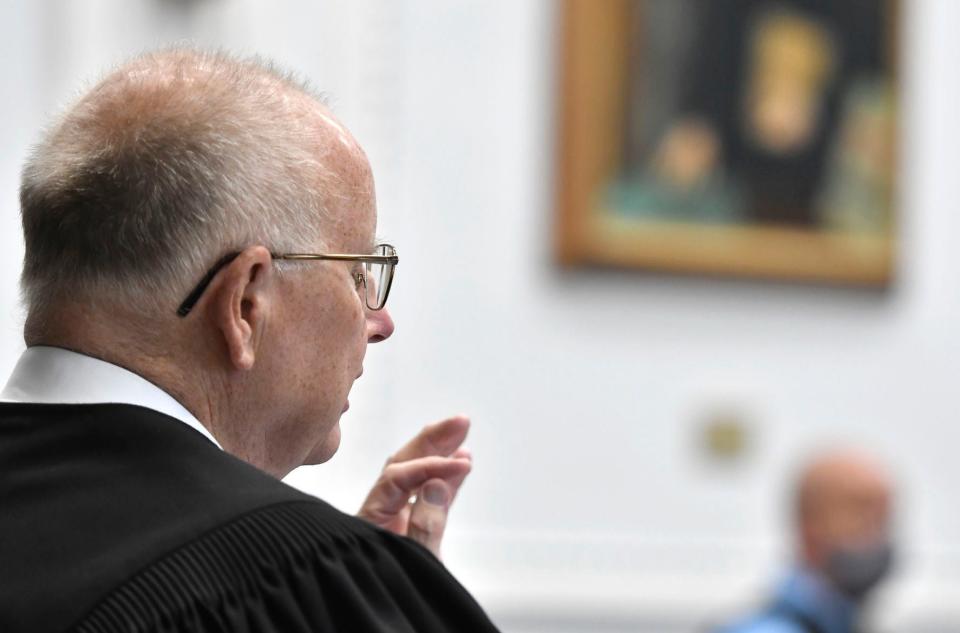
Oct. 25: Judge bars prosecutors from referring to men Rittenhouse shot as 'victims,' but will allow defense to use 'looters'
Judge Schroeder prohibits the use of the term "victim" until someone is convicted of a crime.
As a result, prosecutors during trial must refer to the two people Rittenhouse fatally shot and wounded only by their names, not as victims. His decision generated a huge response on social media.
Schroeder also denied more prosecution motions at the last scheduled hearing before the trial. The prosecution sought to block the defense from introducing evidence that, earlier in the night of the shootings, a law enforcement officer had told Rittenhouse and other armed men who were not being moved out of area under the curfew, "We appreciate you guys, we really do."
Rittenhouse's lawyers also tried to have the possessing a firearm by a minor charge, a misdemeanor, dismissed.
Nov. 1: The trial is set to begin
Jury selection is set to begin.
Nov. 19: Rittenhouse has been found not guilty
Rittenhouse has been found not guilty on all five counts, the 12-person jury decided.
The jury deliberated for more than 25 hours over the course of four days.
Our subscribers make this reporting possible. Please consider supporting local journalism by subscribing to the Journal Sentinel at jsonline.com/deal.
DOWNLOAD THE APP: Get the latest news, sports and more
This article originally appeared on Milwaukee Journal Sentinel: Timeline of Kyle Rittenhouse case following the Jacob Blake shooting
Solve the daily Crossword

